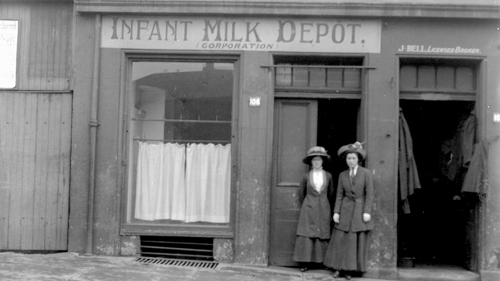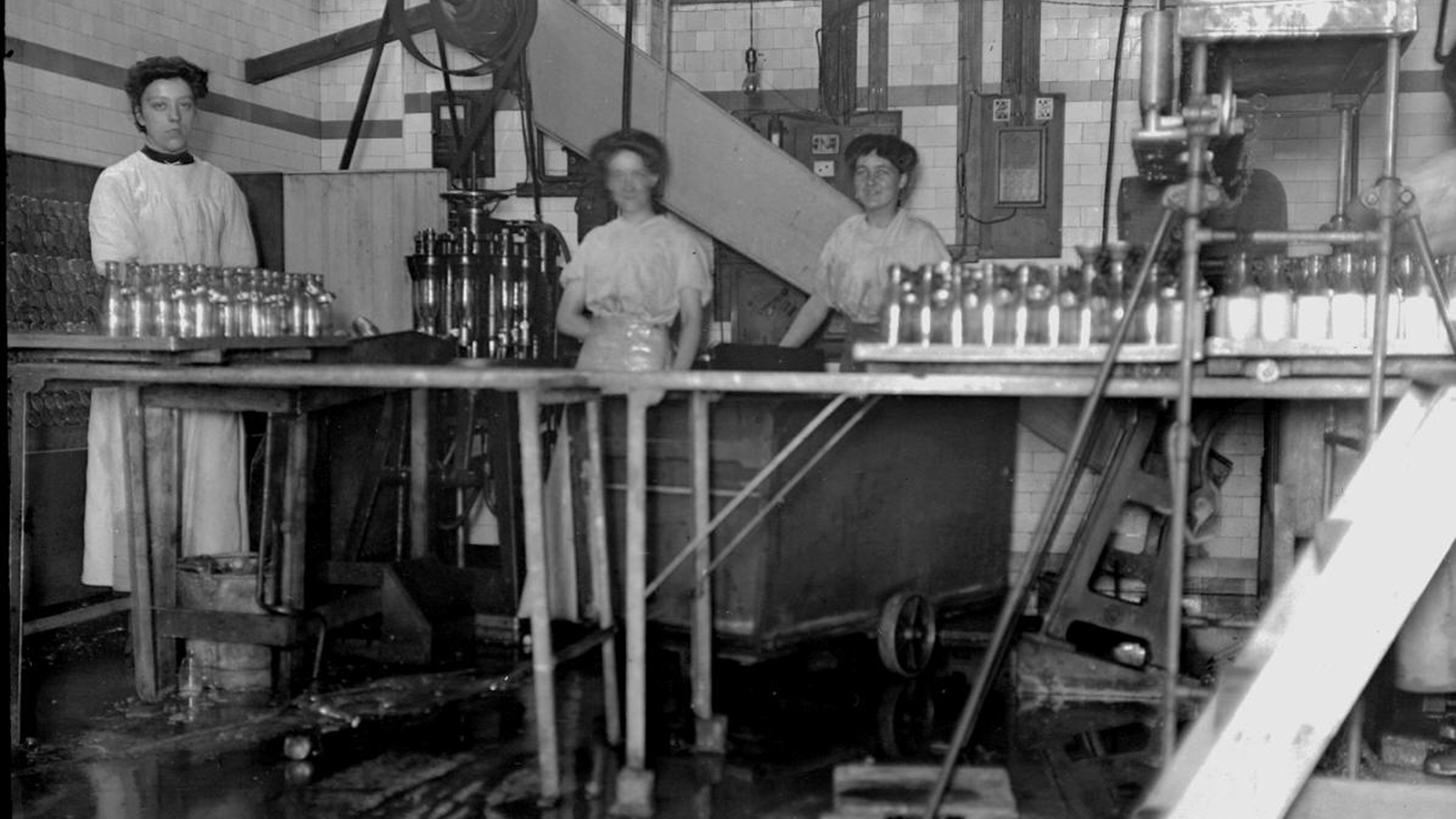Glasgow Corporation Infant Milk Depot - Times Past

In partnership with the Glasgow Times, our archivists are exploring Glasgow's fascinating history. This week, Irene O'Brien writes about the Glasgow Corporation Infant Milk Depot and infant welfare in the city.
Glasgow Corporation took on many powers to improve the welfare of its citizens and, given the city’s national significance, its public health measures, both in the milk depot movement and broader promotion of infant welfare, were watched with interest elsewhere in Britain.
Glasgow, like elsewhere in UK, suffered a high-level of infant mortality in the early 20th century. In 1903 its Health Committee decided to set up milk depots in the poorer parts of the city. Here, mothers could obtain, free or at a small charge, suitably prepared sterilised milk for their infants, and advice on infant feeding and hygiene for themselves.
The first Glasgow Milk Depot opened at 68 Osborne Street, off Saltmarket, in June 1904. Each mother received a leaflet, written by the Medical Officer of Health, emphasising that the depot was only to be used by infants whose mothers were unable to breastfeed, and setting out in detail the process for the collection and preparation of milk. The depot was open from 11am to 6pm, six days a week, with two days’ supply being issued on a Saturday. The milk was provided at a cost of two pence a day for infants aged up to three months. The Corporation believed this to be cheaper than the price in equivalent schemes in England. In many instances, milk was provided free of charge, the money to cover these cases coming from ‘various sources’.
The Glasgow scheme owed its success to the many women voluntary helpers from various organisations, who worked in the various depots in Anderston, Gorbals and Bridgeton, helping the mothers, and visiting them in their own homes. In the spring of 1906 the first woman doctor was added to the staff of the Health Department to supervise the scheme and to take part in infant consultation sessions. The first full-time health visitor was appointed at the same time. In 1907 the Cowcaddens Ladies’ Child Welfare Association in response to the poor state of nutrition of many of the expectant mothers, opened a feeding centre in the milk depot premises in Maitland St, where a two-course dinner was supplied for 3d - and a penny for a toddler.
The new service became popular and was gradually expanded. By 1914 the 7 consultation services were expanded to 14 and there were 4 medical officers; and 10 trained nurse health visitors in the maternity and child welfare departments; the latter were increased to 20 during WW1.
The city realised that the distribution of milk alone was unlikely to provide a satisfactory solution to high infant mortality. Nevertheless, the depot scheme continued to receive significant support, as part of a growing portfolio of infant welfare measures.


